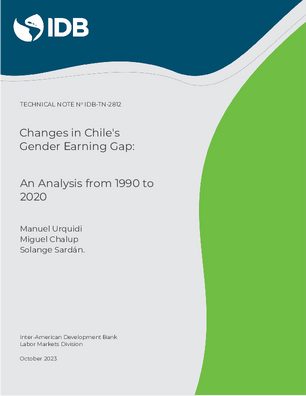Changes in Chile's Gender Earning Gap: An Analysis from 1990 to 2020
Date
Oct 2023
The gender earnings gap between men and women in Lan America is an obstacle to achieving gender equality and sustainable development. In Chile, this gap persists despite the fact that women, in many cases, have better labor profiles than men, suggesting the existence of gender biases. It is also observed that this gap is greater among individuals with tertiary education, those living in urban areas, and those who are not self-employed. However, there is a heterogeneous income difference in favor of men in most occupations. To analyze the gender earnings gap in Chile between 1990 and 2020, this study uses the National Socioeconomic Characterization Surveys (CASEN) harmonized by the Inter-American Development Bank (IDB), and presents two methodologies to estimate it: the Blinder-Oaxaca decomposition and the Ñopo decomposition. A total earnings gap between women and men in the analyzed period is evident, and the existence of possible gender biases has also been shown. This indicates that additional efforts are required to understand the recorded disparity. The analysis shows that while the total gap has decreased, as has happened in many other countries in the region, this reduction is generally related to the explained gap (derived from individuals' endowments in education, work experience, age) and not to a reduction in the gap that cannot be explained by these variables. The later could be associated with gender-differenated regulations, prejudices, biases, or discrimination, so determining its components with specific methodologies is a requirement for implementing policies to address it since it persists over time




